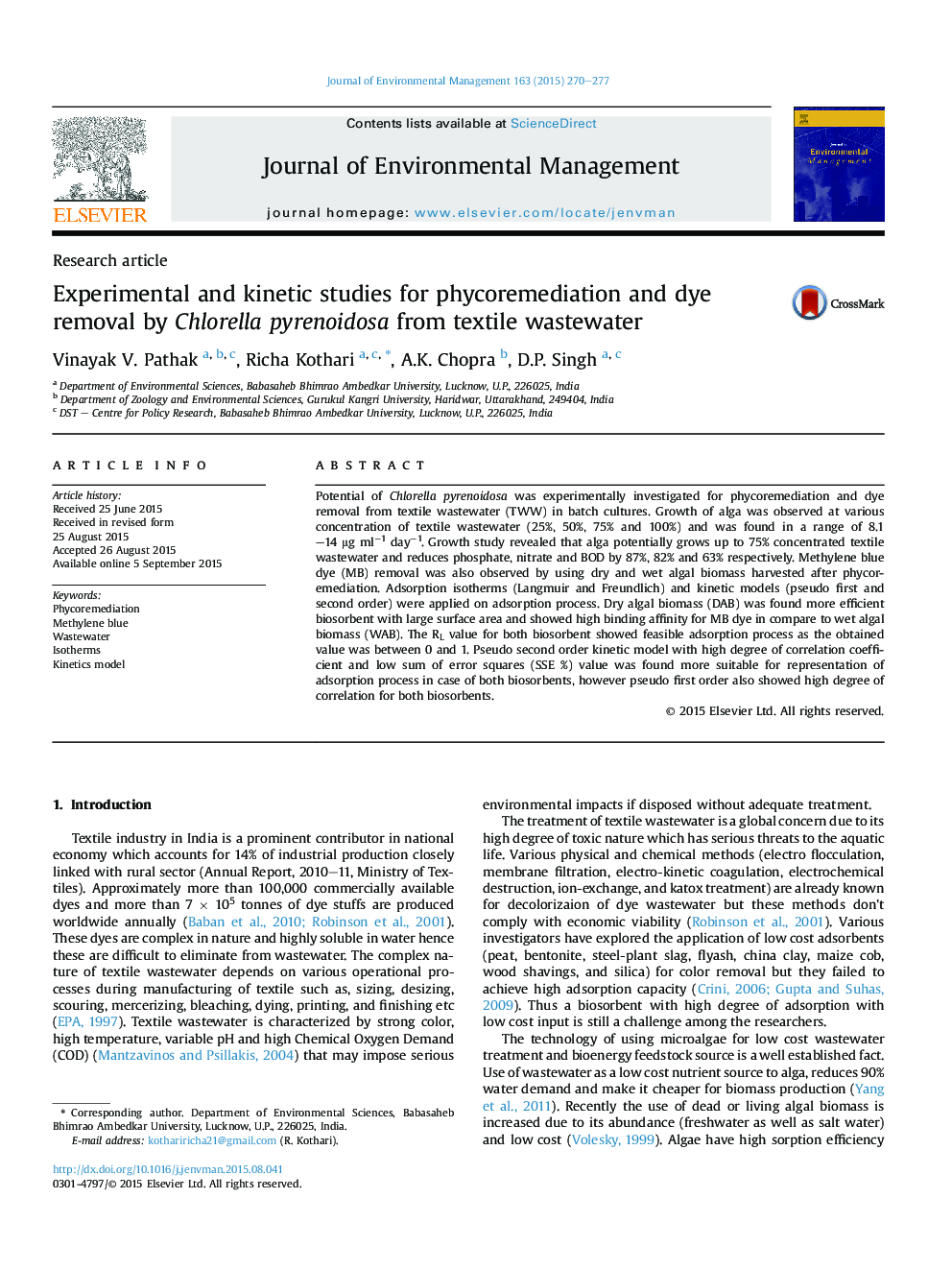| Article ID | Journal | Published Year | Pages | File Type |
|---|---|---|---|---|
| 1055535 | Journal of Environmental Management | 2015 | 8 Pages |
•Textile wastewater has significant nutrient availability for algal growth.•Remarkable reduction in Nitrate (63%), Phosphate (82%) and BOD (82%) is achieved.•Adsorption capacity of dry algal biomass is high due to large surface area.•Kinetic data were well described by pseudo second order model.•Dye bound algal biomass can be reused for biofuel production.
Potential of Chlorella pyrenoidosa was experimentally investigated for phycoremediation and dye removal from textile wastewater (TWW) in batch cultures. Growth of alga was observed at various concentration of textile wastewater (25%, 50%, 75% and 100%) and was found in a range of 8.1–14 μg ml−1 day−1. Growth study revealed that alga potentially grows up to 75% concentrated textile wastewater and reduces phosphate, nitrate and BOD by 87%, 82% and 63% respectively. Methylene blue dye (MB) removal was also observed by using dry and wet algal biomass harvested after phycoremediation. Adsorption isotherms (Langmuir and Freundlich) and kinetic models (pseudo first and second order) were applied on adsorption process. Dry algal biomass (DAB) was found more efficient biosorbent with large surface area and showed high binding affinity for MB dye in compare to wet algal biomass (WAB). The RL value for both biosorbent showed feasible adsorption process as the obtained value was between 0 and 1. Pseudo second order kinetic model with high degree of correlation coefficient and low sum of error squares (SSE %) value was found more suitable for representation of adsorption process in case of both biosorbents, however pseudo first order also showed high degree of correlation for both biosorbents.
